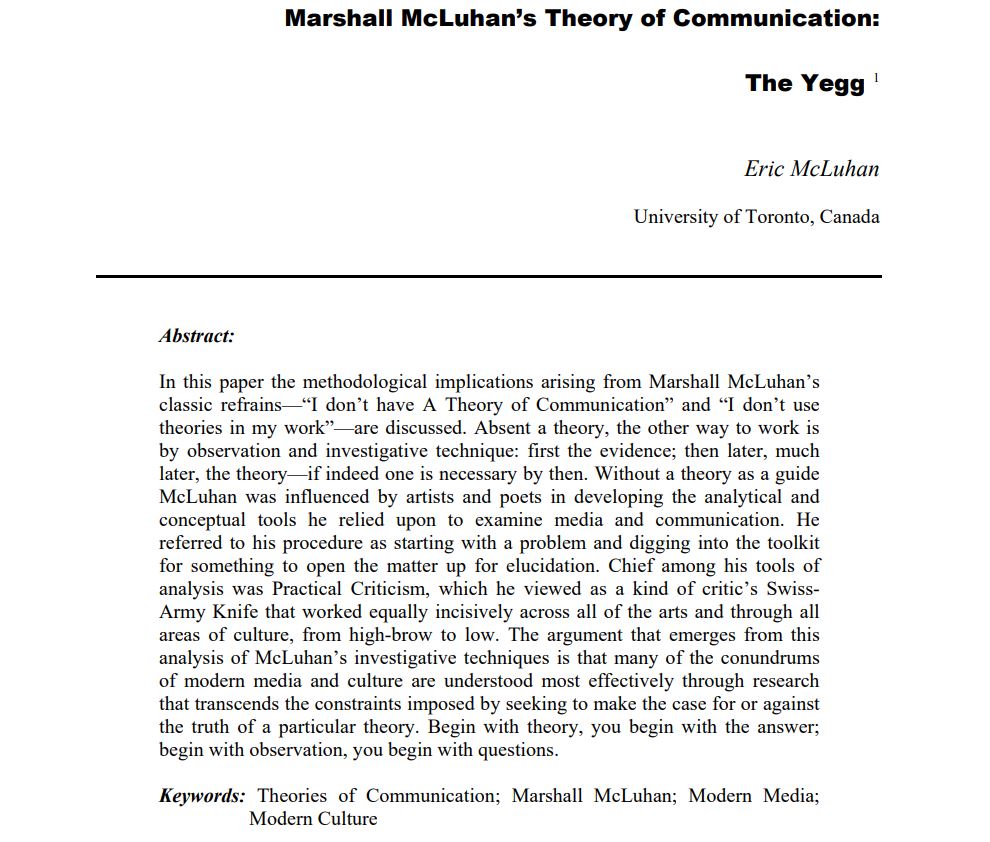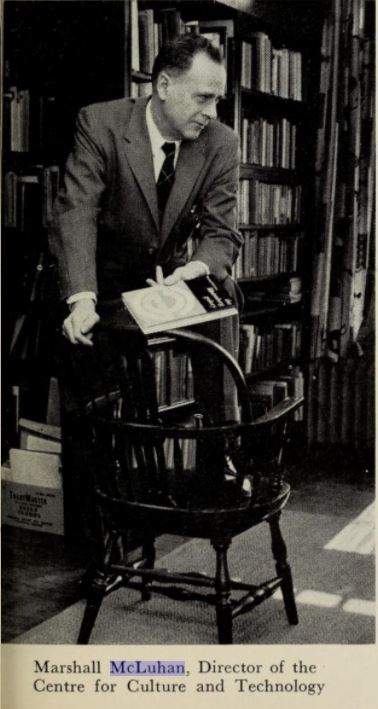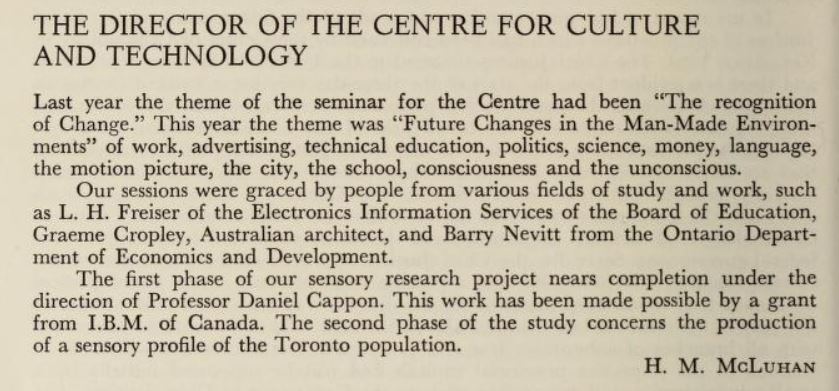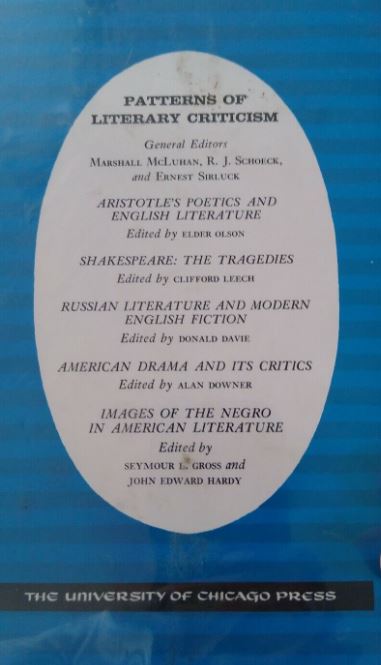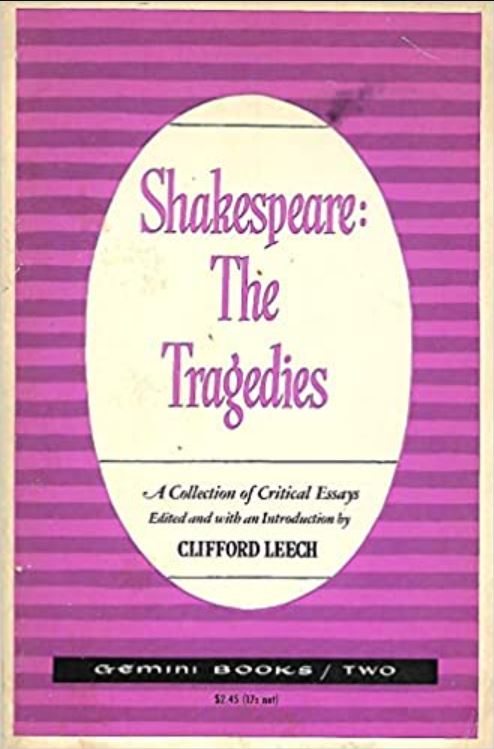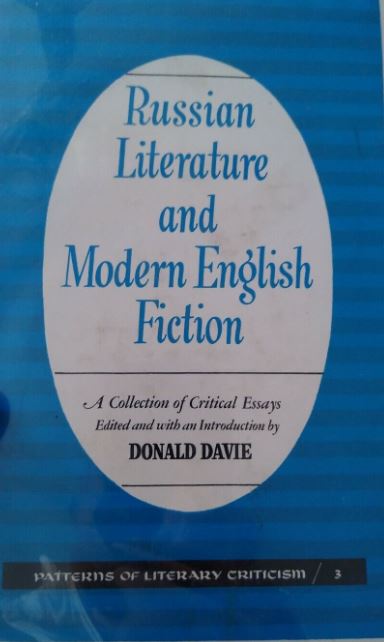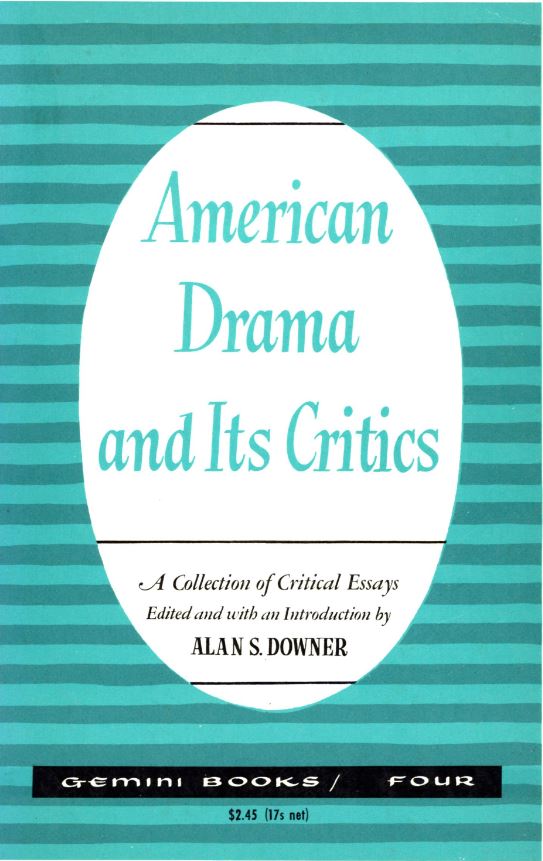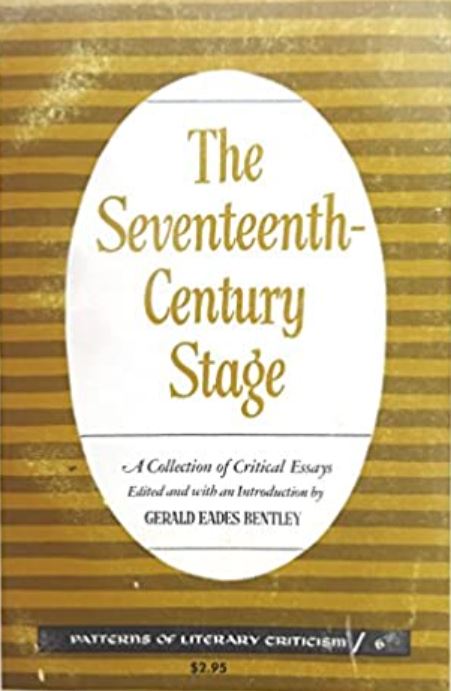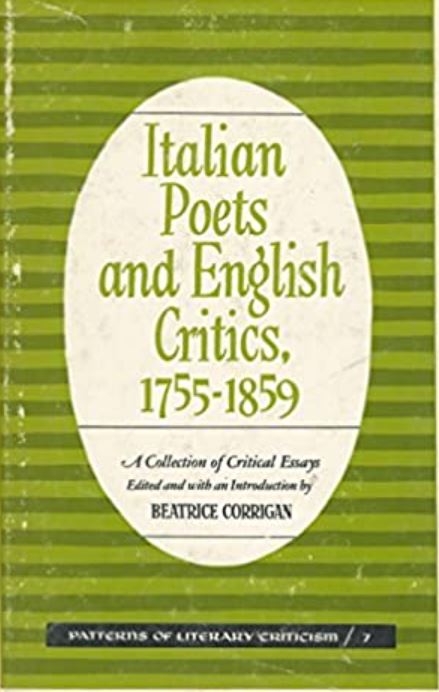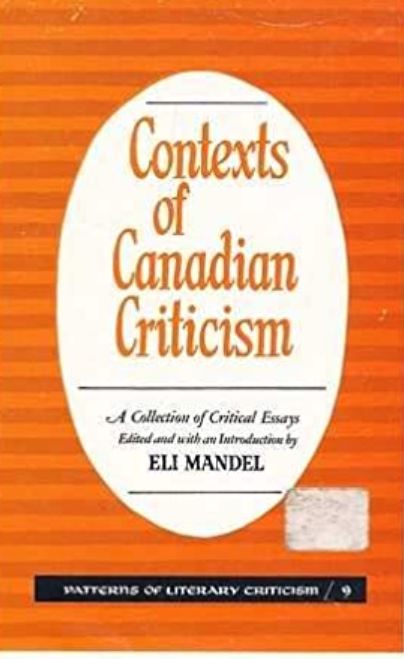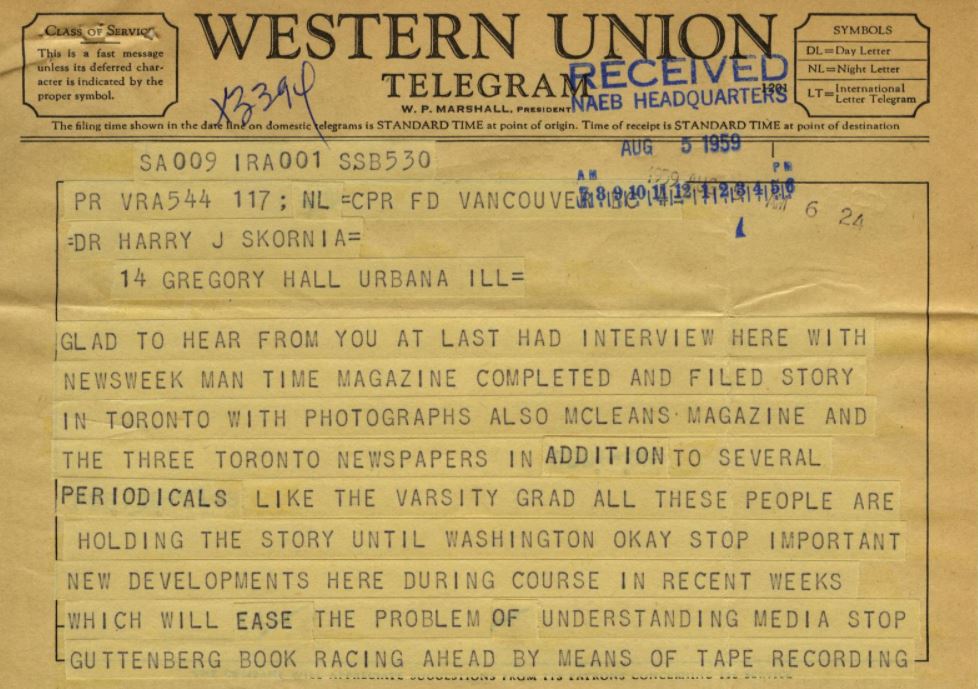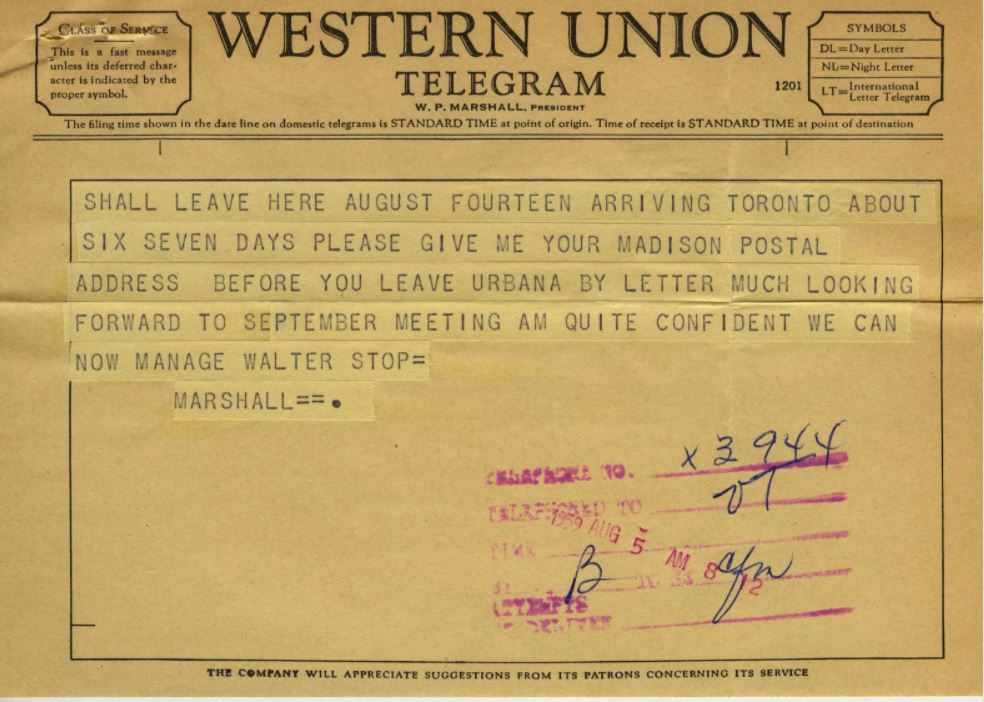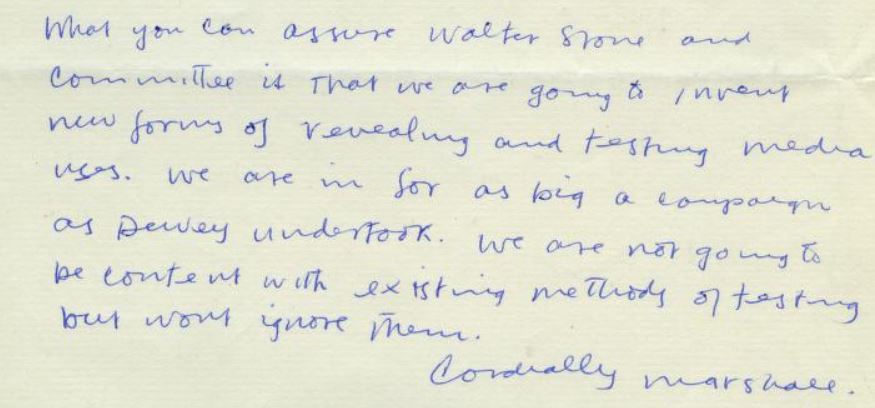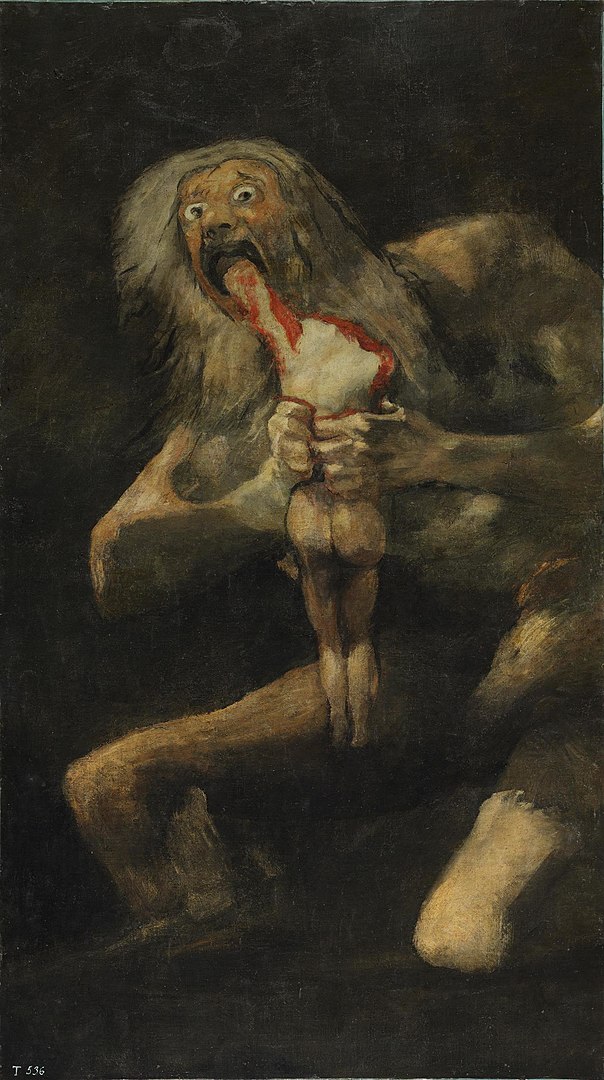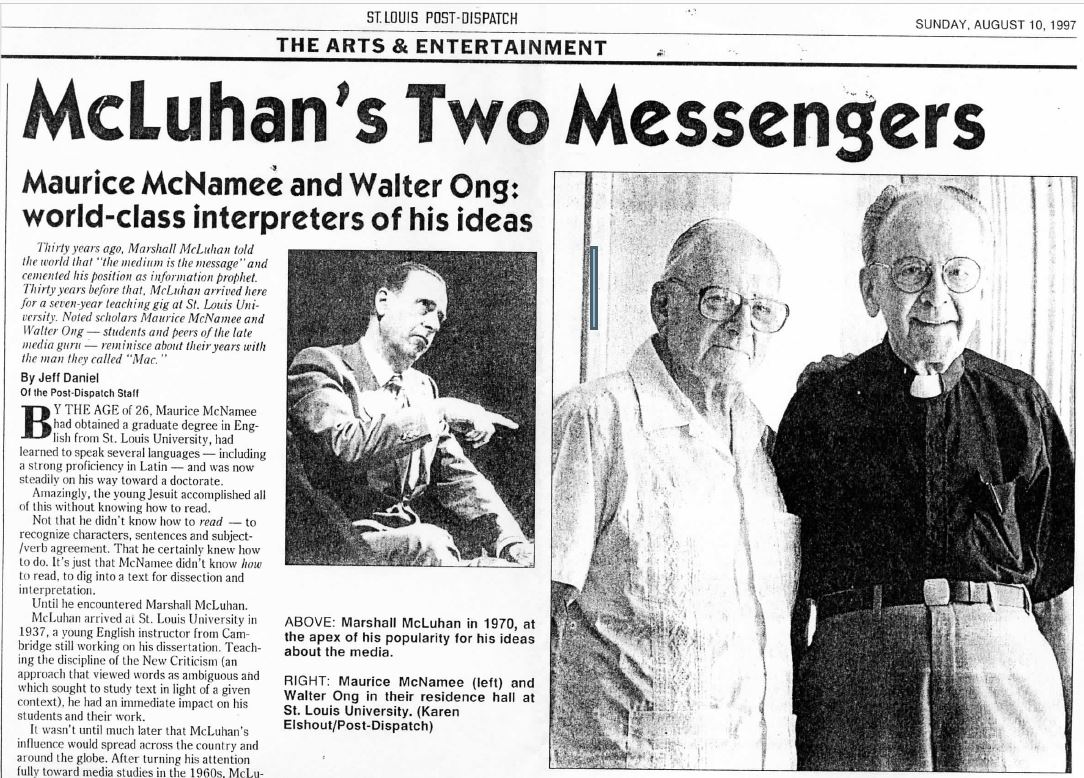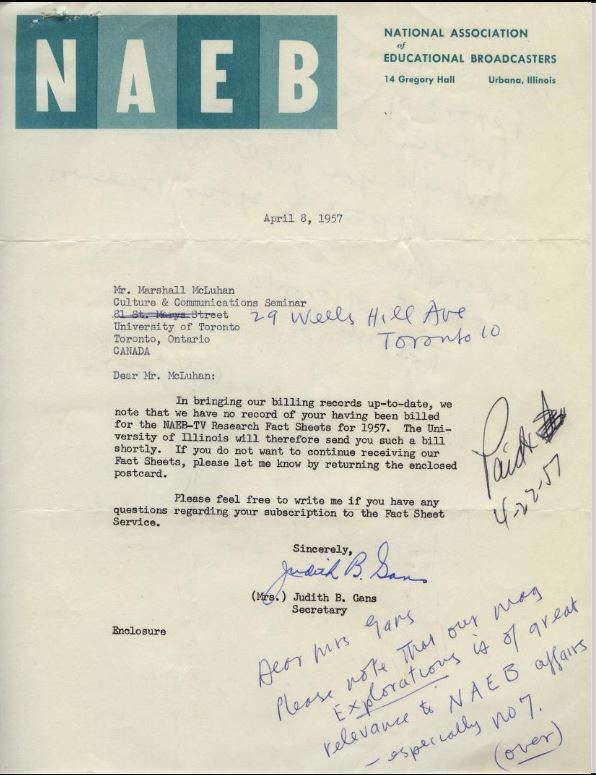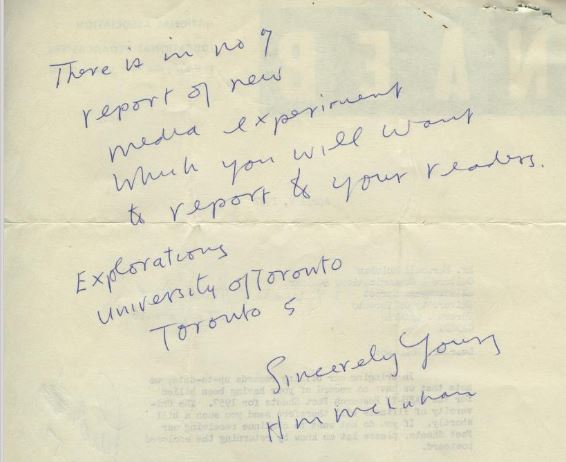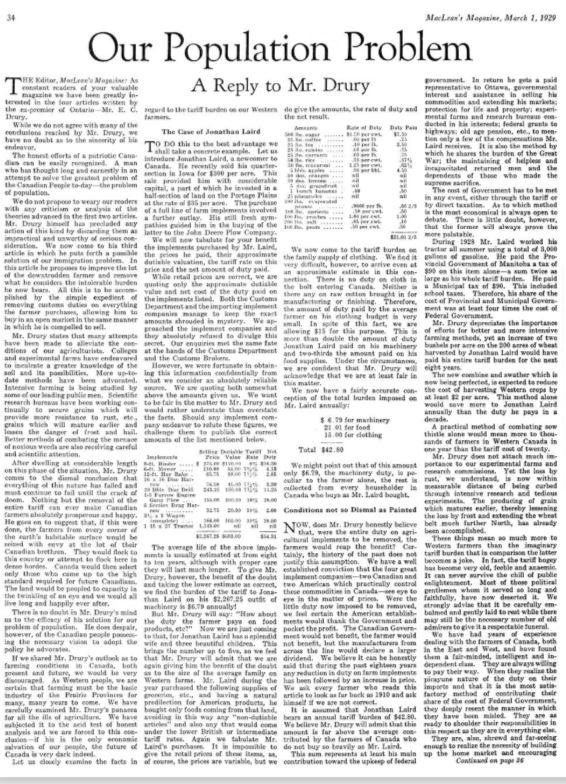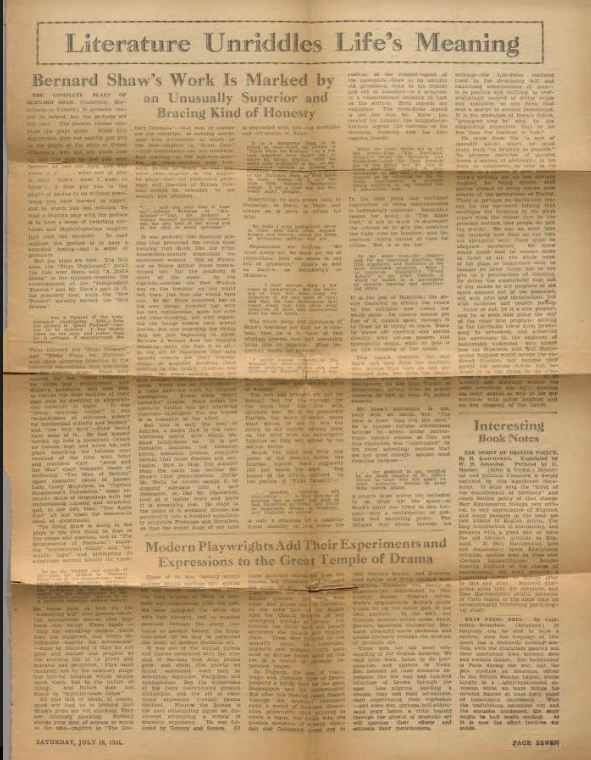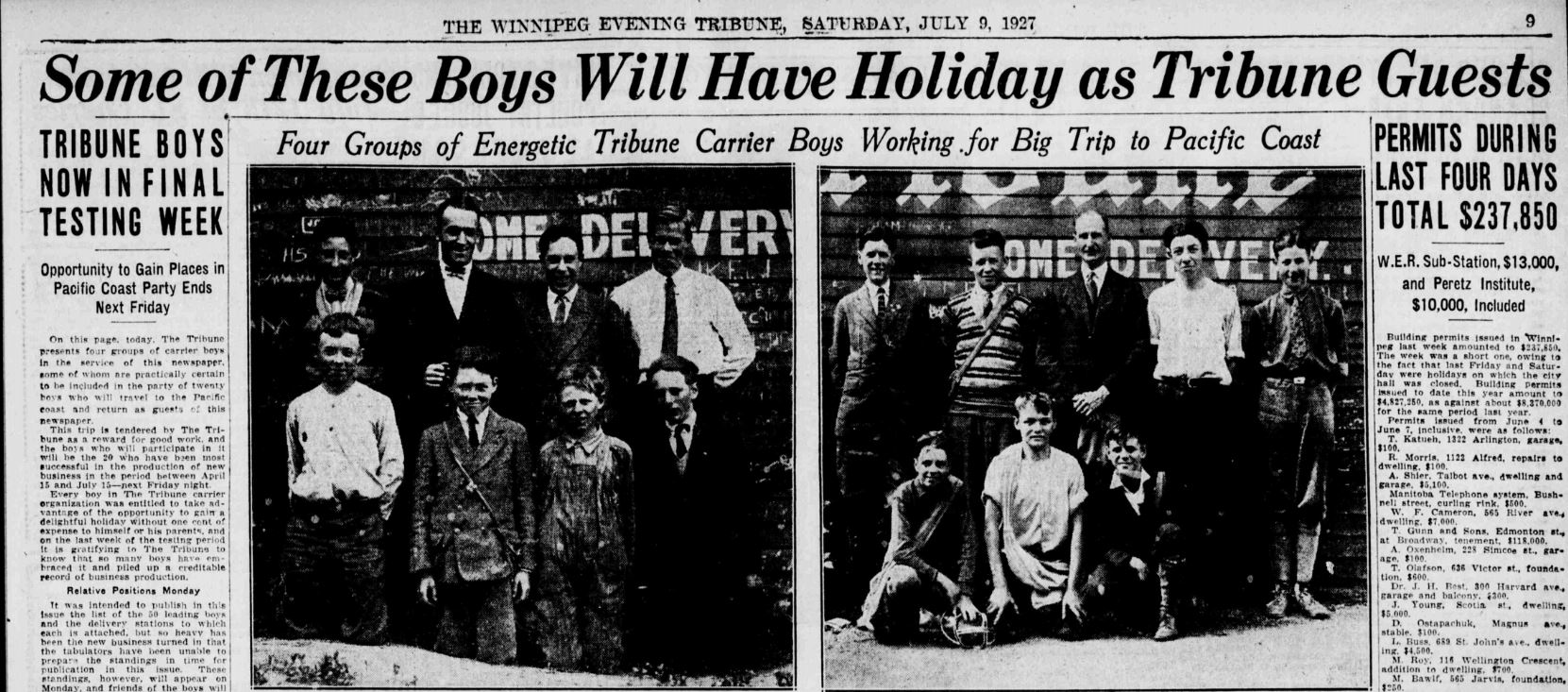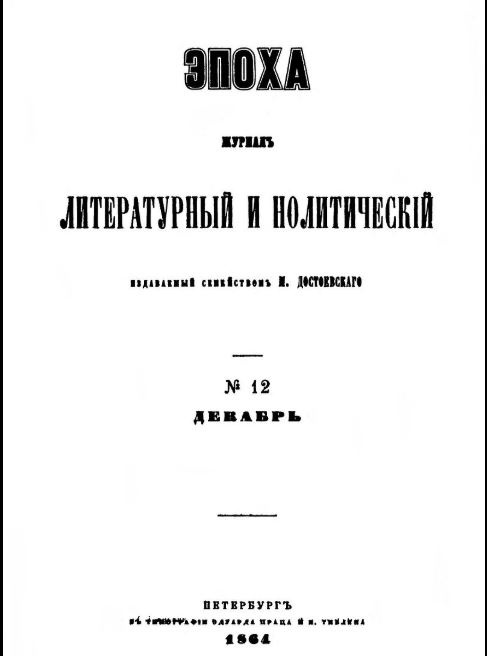For Gerry Fialka and Clinton Ignatov, and with a tip of the hat to Søren Kierkegaard1….
The archetype is extremely cohesive, the residues of other archetypes adhere to it. When we consciously set out to retrieve one archetype, we unconsciously retrieve others, and this retrieval recurs in infinite regress. In fact, whenever we ‘quote’ one [archetype of] consciousness [objective genitive]2, we also ‘quote’ [all] the archetypes we exclude; and this quotation of excluded archetypes has been called by Jung (…) ‘the archetypal unconscious’. (From Cliché to Archetype, 21-22)
[Freud’s] conception of man, considered historically, is a reaction against the Victorian tendency to see everything in a rosy light and yet to describe everything sub rosa. It was an age of mental “pussyfooting” that finally gave birth to Nietzsche, who was driven to philosophize with a hammer. So it is only logical that ethical motives as determining factors in human life do not figure in Freud’s teaching. He sees them in terms of conventional morality, which he justifiably supposes would not have existed in this form, or not have existed at all, if one or two bad-tempered patriarchs had not invented such precepts to protect themselves from the distressing consequences of their impotence. Since then these precepts have unfortunately gone on existing in the super-ego of every individual. This grotesquely depreciative view is a just punishment for the historical fact that the ethics of the Victorian age were nothing but conventional morality, the creation of curmudgeonly praeceptores mundi. (Jung on Freud)3
In ‘Sigmund Freud in His Historical Setting’, Jung considered how something like a ‘galaxy’ of experience operates:
even the most original and isolated idea does not drop down from heaven, but grows out of an objective network of thought which binds all contemporaries together whether they recognize it or not.
Such an “objective network” is manifested both individually (in a person like Freud for the purposes of Jung’s essay) and collectively (“which binds all contemporaries together”). But “all contemporaries” here should not be understood to mean ‘everybody alive at the same time’ and especially not to mean ‘everybody alive at the same time who all experience the world in the same way’. The human community (or comedy) is far more various than that.4 Some singular form of experience certainly did not dominate individuals like Freud all the time (let alone whole groups of individuals all the time) and it did not dominate in any way at all many other individuals who were alive at the same time as Freud and in that sense were ‘contemporary’ with him.5
It would seem that human experience, individual or collective, must be understood more finely — that is, with greater attention to its phenomenology, to its breaks and variations and assumptions (on the sides both of the observed and observer!). Descriptions in terms of persons (Freud) or groups of persons (Freud’s ‘contemporaries’) or ages (the nineteenth century!) will not do. These are air balloons. But while they fail in categorizing experience in a rigorous way, they do show that categorizing experience is always going on in one way or another. We can’t do without it! These air balloons therefore demonstrate both a need and attempts to answer that need. Determined investigation is called for to retrieve what is at once signaled by them and obscured by them.
Instead of such easy and misleading understandings, “contemporaries” may be taken to name, as the word itself indicates, a group whose shared experience has its root in a certain acceptance of time (dual genitive)6: con-temporaries. In the case of the Gutenberg galaxy (the phenomenon, not the book), the acceptance was (and is) of time as singular and linear. But since this particular acceptance of time is anything but unanimous across the extended record of human cultures, it must be asked where and when and by whom such a determination is reached. Apparently there is another space and time (McLuhan termed it the ‘interior landscape’), in which the specification of such acceptances is incessantly at stake (McLuhan termed it ‘the drama of cognition’) involving some sort of ghostly actor (McLuhan termed it the ‘nobody’7 behind the dramatic masks).
The resulting implication is that time and space are fundamentally plural, not singular, and, at least in the first instance, vertical, not linear. ‘Con-temporaries’ thus takes on a further meaning as the fundamental task of human individuals and societies in determining, moment by moment, space, time and identity. This is a task that is going on ceaselessly, yet with no notice at all, behind our own backs. Penelope unweaving by night what she wove by day is an image of this definitive activity of humans — an essential activity like breathing that is yet, remarkably enough, unknown and uninvestigated.8
McLuhan would initiate investigation of this activity as the path to potential survival in an age in which the ‘advance’ of human activity has come to threaten its own destruction: the Tower of Babel revisited. But just as with the ‘exterior landscape’, preliminary “pattern recognition” must first be achieved9 in order to initiate collective investigation of this “landscape” based on common focus. This is what happened with chemistry in the exterior landscape and what must now also happen in the interior one — if its investigation is finally to take off.10
A ‘galaxy’ of experience covers a loosely defined group in the same way that ‘organic’ names an enormous variety of carbon-based compounds. A timeless structure like carbon is at the base of such a group, but that structure has “innumerable variants”11 and is in any case only one elementary possibility amongst a whole ‘table’ of others.12 Exactly therefore, “when we consciously set out to retrieve one archetype, we unconsciously retrieve [all the] others” — that is, we cannot understand the particular structure of one of them without understanding the general structure of all of them.
To take an example, electric media expose old media, like the book or the car, as obsolete. Unconsciously (in the vast majority of cases) or consciously (at least potentially), this exposure implicates the medium as such. We are able to judge old media on the basis of new media only because we have some implicit notion of the medium and of the range of its expression — as plural media.
McLuhan’s quest was to bring these implicit understandings to explicit collective investigation — hence his constant appeal to “the grammars of the media“. For just as we follow the rules of language without knowing that we are doing so, so (in McLuhan’s view) we follow the ‘laws of media’ — but unconsciously.13 And this quest would be no mere conceptual exercise. It would eventuate in the study of dynamic media structures both in themselves and in their phenomenal expression — just as chemistry studies the elements both in themselves and in their phenomenal expression.
The phenomenon of the Gutenberg galaxy was a multifarious collection of individuals and groups. When it was in operation, this form issued from a principle that was be-fore in time14 (but not clock-time, of course) in such a way as to “fore-ordain” experience — regardless of “whether they [those dominated by it] recognize it or not”:
the matrix out of which Freud grew, and its mental characteristics have shaped him along foreordained lines
he is under compulsion from the Zeitgeist
“Zeitgeist“15, like “contemporary”, is ambiguous. It can refer to a rather vague epoch in chronological time or to the underlying possibility out of which such temporal phenomena are issued — like the outburst of a geyser16 into diachronic time (Zeit #2) from out of its “ancient”, perennial or synchronic time (Zeit #1). Jung makes the point nicely:
The human psyche, however, is not simply a product of the Zeitgeist [narrowly construed as an historical epoch], but is a thing of far greater constancy and immutability. The nineteenth century is a merely local and passing phenomenon, which has deposited but a thin layer of dust on the age-old psyche of mankind.17 Once this layer is wiped off and our professional eye-glasses are cleaned, what shall we see?
Jung therefore comments as regards Freud that:
A general psychological theory that claims to be scientific should not be based on the malformations of the nineteenth century, and a theory of neurosis must also be capable of explaining hysteria among the Maori.18
In the same way, media may not be understood literally as modern communication devices or even as all such devices, modern and historical. Instead, media as the abysmal patterns of the weaving and unweaving of experience19 are ‘contemporaneous’ with human being: it cannot be understood aside from them and they cannot be understood aside from it.20 In fact, neither can be at all without the other. Hence the very great difficulties involved in the investigation of media by human beings.
A check on any discussion of McLuhan and media may therefore be made simply by asking if it has overlooked, or not, what it means (and what it always has meant) to be human.21
Universal abdication of human motive is now plain. (McLuhan to Pound, July 30, 1948, Letters 198)
- Kierkegaard’s great virtue lies in reminding us over and over again how strange it is, indeed how ridiculously comical it is, for us to overlook human being in our investigations of individual and collective human phenomena. ↩
- See note 6. ↩
- Jung, ‘Sigmund Freud als kulturhistorische Erscheinung’ (1932). The first English translation appeared in the same year as the German original. The official translation of the essay is now included in CW15 and it is this translation which is cited in the quotations below that are not otherwise identified. The praeceptores mundi are the preceptors of world, which is one way of describing the archetypes. ↩
- Does a person at breakfast experience the world in the same way and as she will paying her bills that afternoon? ↩
- ‘Contemporary’ is used here in its usual sense of ‘at the same time’ — but only by way of posing the question: just what does ‘at the same time’ mean? As developed in this post, it would seem that it is no more straightforward in regard to human existence than it is to quantum particles. ↩
- A subjective genitive denotes possession: the ball of the boy; an objective genitive denotes some quality of an object: a recommendation of the boy; a dual genitive is to be understood in both ways: ‘acceptance of time‘, where the genitive is ambiguous between time as the determined object and time as the determining subject. ↩
- Compare Jung on the “ineffable something”: “This something is the desired ‘mid-point’ of the personality, that ineffable something betwixt the opposites (…) the product of energic tension” (CW7: Two Essays in Analytic Psychology). ↩
- Neither the exterior landscape nor the interior landscape is, of course, some molar singularity. Both are vast multifarious realms. But while the multifariousness of the exterior one has been subject to increasingly rigorous investigation for centuries now in a whole series of sciences, the interior one, when acknowledged at all, remains subject to guesses and pretenses. Its basic patterns — whose recognition would work to spark collective investigation in parallel fashion to the sciences of the exterior landscape — remain unknown. The extreme peril of the world is the result of this imbalance between exterior ‘success’ and interior ignorance. Hence the imperative of McLuhan’s ‘the medium is the message’! ↩
- Before being achieved in confirmed recognition, patterns must of course first be sought, by weaving and unweaving across all possibilities. This is what McLuhan was doing from, roughly, 1930 to 1960. Working his way through this labyrinth, or these labyrinths, he finally came to recognize the pattern in his attempts at pattern recognition: the medium that is the message! ↩
- See The technique of flight. ↩
- See Take Today 22: “There are only two basic extreme forms of human organization. They have innumerable variants or ‘parti-colored’ forms.” In the same place McLuhan specifies the “two basic extreme forms” as “eye and ear”. The distinct parallel with carbon (one type of the “two basic extreme forms” of the electron and proton) lies in the fact that carbon’s manifestations include not only molecules like graphite and diamond, but also “innumerable” compounds with other elements. It can hardly be the case that the exterior landscape is composed of such enormously complex structures and the interior landscape only of simple monolithic ones like ‘Freud’ or ‘the western tradition’. ↩
- Elementary structures like carbon are, of course, not ‘timeless’ as regards our understanding of them nor as regards their own dynamics (their impetus to expression). They are ‘timeless’ only in not being single level diachronic phenomena. The achievement of chemistry lay in differentiating the elementary from the phenomenal levels of the material universe while also relating the two by way of demonstrable ‘properties’. ↩
- This is the condition according to McLuhan of our having mass media at all: “the mechanical or mass media of communication must at least parrot the world (as we know it in our ordinary experience) in order to hold our attention” (‘Catholic Humanism and Modern Letters’, 1954). The bracketed clarification has been added. ↩
- The root of the particular Gutenberg galaxy form of experience thus contradicts that experience itself. Where it would be single-leveled and linear (diachronic), its archetypal form, like all archetypal forms, is multi-leveled and all-at-once (synchronic). ↩
- Zeitgeist = Zeit (time) + Geist (spirit), so ‘the spirit of a time’. Like ‘contemporary’, Zeitgeist poses the question of how human being and time belong together. What is a time anyway? And what is spirit? And how do they operate in some kind of concert? And how does this concert break down? ↩
- ‘Geist‘ and ‘geyser‘ seem not to be cognates, but the association is interesting to contemplate, especially where the dynamic action of Geist is considered as synchronic and not (at least not in the first instance) as diachronic. ↩
- Compare McLuhan on ‘allatonceness’ and on the “ageless mysteries in the relations of men” in note 20 below. ↩
- Compare McLuhan in From Cliché to Archetype: “For the literary archetypalist there is always a problem of whether Oedipus Rex or Tom Jones would have the same effect on an audience in the South Sea Islands as in Toronto.” The Maori of Jung are, of course, a South Sea Island people. Examples like this suggest to me that Jung was a slow and deep-seeded influence on McLuhan, but not one that he developed to any extent — perhaps on account of Frye’s use of Jung. ↩
- In the citation from The Grammars of the Media in the next note, ‘the weaving and unweaving of experience’ is called our “habits of perception and judgement”. ↩
- Media are “ancient” and “quarrel” among themselves exactly because they are both original (always already there) and plural. Their primordial combination provides what McLuhan terms “a complex view of the world” (‘Catholic Humanism and Modern Letters’). Put historically, there was never a time when humans were not already shaped by contesting multiple media like language, gesture, material culture, mythology, etc. What has happened in the electric age is that this multiplicity of media has become explicit as never before and so has emerged as a potential new field of study: “Educators have used these (new media) as audio-visual aids in varying degrees but without specific attention to their effects on the habits of perception and judgement. Today, however, we cannot afford this easy-going unconcern because the peculiar powers of print, telegraph, photo, TV, movie, typewriter, gramophone, and tape are in strong and jarring conflict. Their constant co-presence has created a situation unknown before, a situation far richer educationally than ever before, yet so confused that the danger is that we smother all the media by their unstudied and uncoordinated expressions.” (The Grammars of the Media) ↩
- McLuhan in his 1951 Dos Passos essay: “Joyce manipulates a continuous parallel at each moment between naturalism and symbolism to render a total spectrum of outer and inner worlds. The past is present not in order to debunk Dublin but to make Dublin representative of the human condition. The sharply-focussed moment of natural perception in Joyce floods the situation with analogical awareness of the actual dimensions of human hope and despair. In Ulysses a brief glimpse of a lapidary at work serves to open up ageless mysteries in the relations of men and in the mysterious qualities of voiceless objects. The most ordinary gesture linked to some immemorial (…) situation sets reverberating the whole world of the book and flashes intelligibility into long opaque areas of our own experience.” ↩
